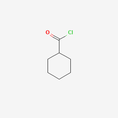Introduction
P - Phenylenediamine (PPD), with the chemical formula C₆H₈N₂, is a key ingredient widely used in the hair dye industry. It is an aromatic diamine, appearing as a white to light - purple crystalline powder. When exposed to air and light, it may gradually turn darker. PPD plays a crucial role in the oxidation hair - dyeing process, where it reacts with other components in the hair dye formulation to form colored compounds that penetrate the hair shaft, resulting in long - lasting hair color.
Advantages
Intense and Long - lasting Color
PPD can produce a wide range of rich, vibrant, and long - lasting hair colors. It has excellent affinity for hair fibers, allowing the color to adhere firmly to the hair and resist fading from washing, sunlight, and other environmental factors. This ensures that the hair maintains its desired color for an extended period.
Versatile Color Options
By combining PPD with different couplers and oxidizing agents, a vast spectrum of hair colors can be achieved, from natural - looking shades to bold and trendy colors. This versatility enables hair dye manufacturers to offer a diverse range of products to meet the various preferences of consumers.
Good Penetration Ability
PPD has the ability to penetrate the cuticle layer of the hair shaft effectively. Once inside the hair, it undergoes chemical reactions to form large, insoluble color molecules that are trapped within the hair structure, providing a more permanent color change compared to some other hair - coloring agents.
Cost - effective
As a widely available and relatively inexpensive chemical, PPD offers a cost - effective solution for hair dye production. This allows manufacturers to produce high - quality hair dyes at a reasonable price, making them more accessible to consumers.
Applications
Permanent Hair Dyes
PPD is the primary ingredient in most permanent hair dyes. It is used in combination with other chemicals such as hydrogen peroxide (oxidizing agent) and couplers to create a chemical reaction that results in the formation of color within the hair. Permanent hair dyes containing PPD can cover gray hair completely and provide a long - lasting color change.
Semi - permanent Hair Dyes
In some semi - permanent hair dyes, PPD may be used in lower concentrations. Semi - permanent dyes offer a less - permanent color change that gradually fades over several washes. PPD helps to enhance the color intensity and longevity of these products.
FAQ
Q1: Is P - Phenylenediamine safe for hair?
A1: When used in accordance with safety regulations and proper hair - dyeing procedures, PPD is generally considered safe for most people. However, some individuals may be allergic to PPD. It is recommended to conduct a patch test on a small area of skin (usually behind the ear or on the inner elbow) 48 hours before using a hair dye containing PPD to check for any allergic reactions.
Q2: Can PPD cause hair damage?
A2: The oxidation process involved in hair dyeing with PPD can cause some degree of hair damage, especially if the hair is already in a weakened state. However, modern hair - dye formulations often contain conditioning agents to minimize damage. Additionally, proper after - care, such as using hair masks and avoiding excessive heat styling, can help maintain the health of the hair.
Q3: How long does the color last when using PPD - based hair dyes?
A3: For permanent hair dyes containing PPD, the color can last for several weeks to a few months, depending on factors such as hair type, frequency of washing, and exposure to sunlight. Semi - permanent hair dyes with PPD may last for about 4 - 12 washes.
Q4: Can PPD be used on all hair types?
A4: PPD - based hair dyes can be used on most hair types, including straight, wavy, curly, and coily hair. However, individuals with very damaged or chemically - treated hair may need to take extra precautions. It is advisable to consult a professional hairstylist before using a PPD - containing hair dye on severely damaged hair.
Q5: Are there any alternatives to PPD in hair dyes?
A5: Yes, there are some alternatives to PPD in hair dyes, such as P - aminophenol, m - aminophenol, and some natural ingredients like henna. These alternatives may be suitable for individuals with PPD allergies, but they may also have different color - producing capabilities and longevity compared to PPD - based dyes.
Hot Tags: p-phenylenediamine (ppd) for hair dye, China p-phenylenediamine (ppd) for hair dye manufacturers, suppliers, factory, pharmaceutical intermediate yield, api intermediates, pharmaceutical intermediate purchasing, pharmaceutical intermediate development, intermediate products in pharmaceutical manufacturing, pharmaceutical intermediate delivery











